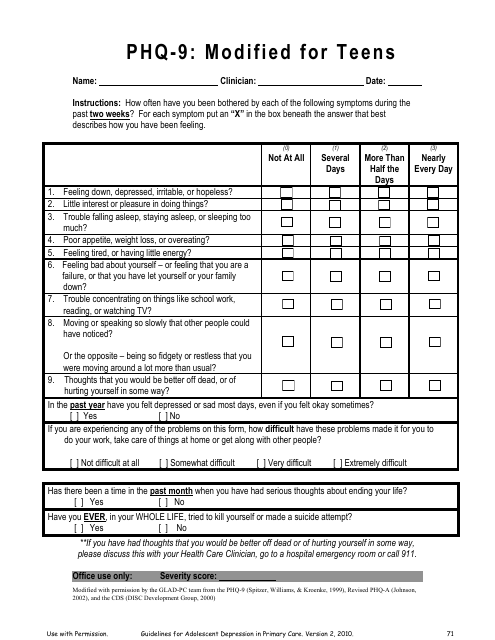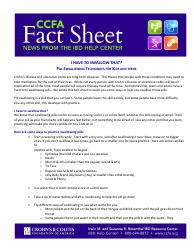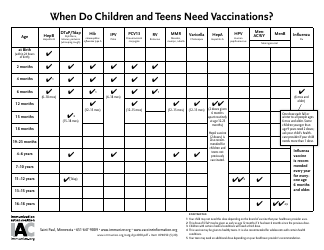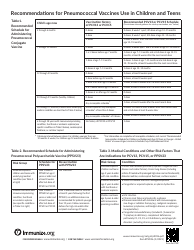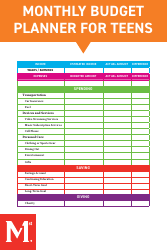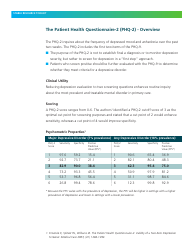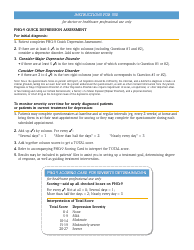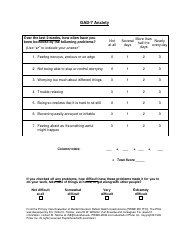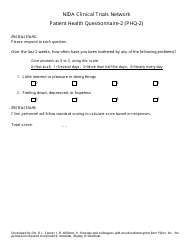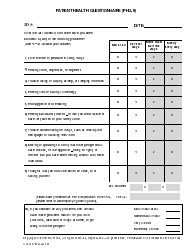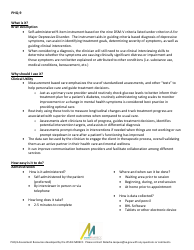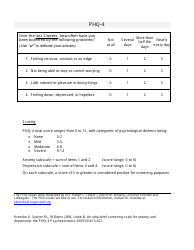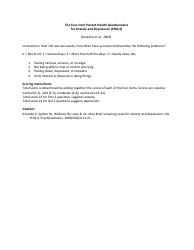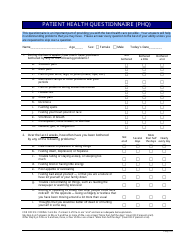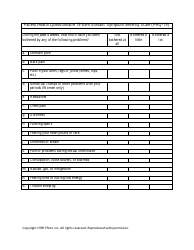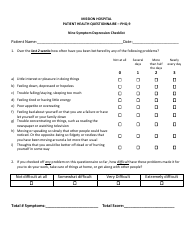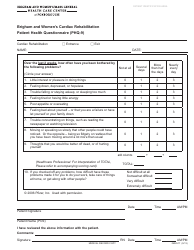Phq-9 Modified for Teens
The PHQ-9 Modified for Teens is a questionnaire used to assess the severity of depressive symptoms in teenagers. It helps healthcare professionals identify and monitor symptoms of depression in adolescents. It is an important tool for diagnosing and treating mental health conditions.
The PHQ-9 modified for teens is typically completed by the teen themselves with the guidance of a healthcare provider or school counselor.
FAQ
Q: What is the PHQ-9?
A: The PHQ-9 is a questionnaire used to assess symptoms of depression.
Q: What is the PHQ-9 Modified for Teens?
A: The PHQ-9 Modified for Teens is a version of the PHQ-9 specifically designed to assess symptoms of depression in teenagers.
Q: Why was the PHQ-9 Modified for Teens created?
A: The PHQ-9 Modified for Teens was created to better capture the experiences and symptoms of depression in teenagers.
Q: How is the PHQ-9 Modified for Teens used?
A: The PHQ-9 Modified for Teens is typically administered by healthcare professionals to assess a teenager's depressive symptoms and determine if further evaluation or treatment is needed.
Q: What does the PHQ-9 Modified for Teens measure?
A: The PHQ-9 Modified for Teens measures symptoms of depression such as sadness, loss of interest, and changes in sleep and appetite.
Q: Is the PHQ-9 Modified for Teens an official diagnostic tool?
A: No, the PHQ-9 Modified for Teens is not an official diagnostic tool, but it can help identify potential signs of depression in teenagers.
Q: Can the PHQ-9 Modified for Teens be used by individuals without professional guidance?
A: It is generally recommended to have a healthcare professional administer and interpret the PHQ-9 Modified for Teens, as they can provide proper guidance and support based on the results.
Q: Are there any other assessments available for teenage depression?
A: Yes, there are other assessments available for teenage depression, such as the Beck Depression Inventory for Youth (BDI-Y) and the Children's Depression Inventory (CDI).
